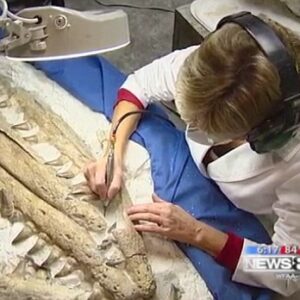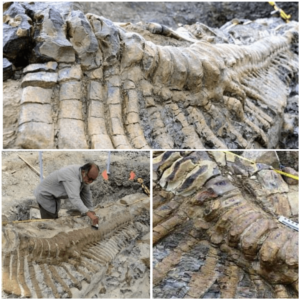In a revolutionary breakthrough that bridges the gap between ancient history and modern science, the face of Ramesses II, one of the most iconic pharaohs of ancient Egypt, has been revealed through warrior technology. This rediscovery offers a fresh and intimate insight into the life of the legendary warrior and builder who ruled Egypt during the 19th Dynasty.

Ramesses II, also known as Ramesses the Great, reigned from 1279 to 1213 BC and is renowned for his military achievements, monumental building projects, and extensive family lineage. His legacy includes the construction of impressive temples, such as Abū Simbel, and the signing of history’s first known peace treaty. Despite his significant historical impact, the physical appearance of Ramesses II has long been a matter of speculation, with ancient statues and reliefs offering only stylized representations.
Recent advances in foreboding archaeology have provided a revolutionary approach to understanding the appearance of historical figures. By combining high-resolution 3D images with sophisticated facial reconstruction techniques, scientists have managed to recreate the face of Ramesses II from his mummified remains. This process involved detailed analysis of the mummy, including CT scans to examine the skull and other atomic features, followed by digital reconstruction of its facial features.
The results are truly remarkable. The facial reconstruction reveals a man with a strong, stately presence, characterized by high cheekbones, a promising face, and a domineering gaze. These features are consistent with descriptions of Ramesses II as a formidable and charismatic ruler. The reconstruction also provides a more nuanced understanding of his age and health, offering insights into what he might have been like in the final years of his long reign.
The significance of this discovery goes beyond its mere visual representation. The process of recreating Ramesses II’s face has provided valuable information on ancient Egyptian practices relating to mummification and the treatment of royal remains. The care of his mummy and the techniques used in his burial reflect the elaborate rituals and high status accorded to pharaohs in ancient Egypt.
Furthermore, this technological advancement has deepened our appreciation of the art and craftsmanship of ancient Egyptian civilization. Detailed facial reconstruction highlights the contrast between the idealized representations found in statues and the more realistic representation revealed through modern science. This combination of art and archaeology enhances our understanding of how ancient Egyptians viewed their rulers and sought to immortalize their legacy.
The impact of this rediscovery also extends to the field of historical education and public engagement. By providing a tangible and relatable image of Ramesses II, the reconstruction helps bring ancient history to life, making it more accessible and engaging for people around the world. It serves as a powerful reminder of the rich cultural heritage of ancient Egypt and the ongoing relevance of historical research in understanding the past.
As research continues, the face of Ramesses II will undoubtedly contribute to future studies of the life and times of the pharaoh. Modern technology has once again proven to be a critical tool in unraveling the mysteries of ancient history, offering new insights and perspectives that enrich our knowledge of the past. The rediscovery of Ramses II’s face not only reveals the legacy of one of history’s greatest leaders, but also highlights the incredible potential of forerunners to bridge the gap between ancient times and the present.





